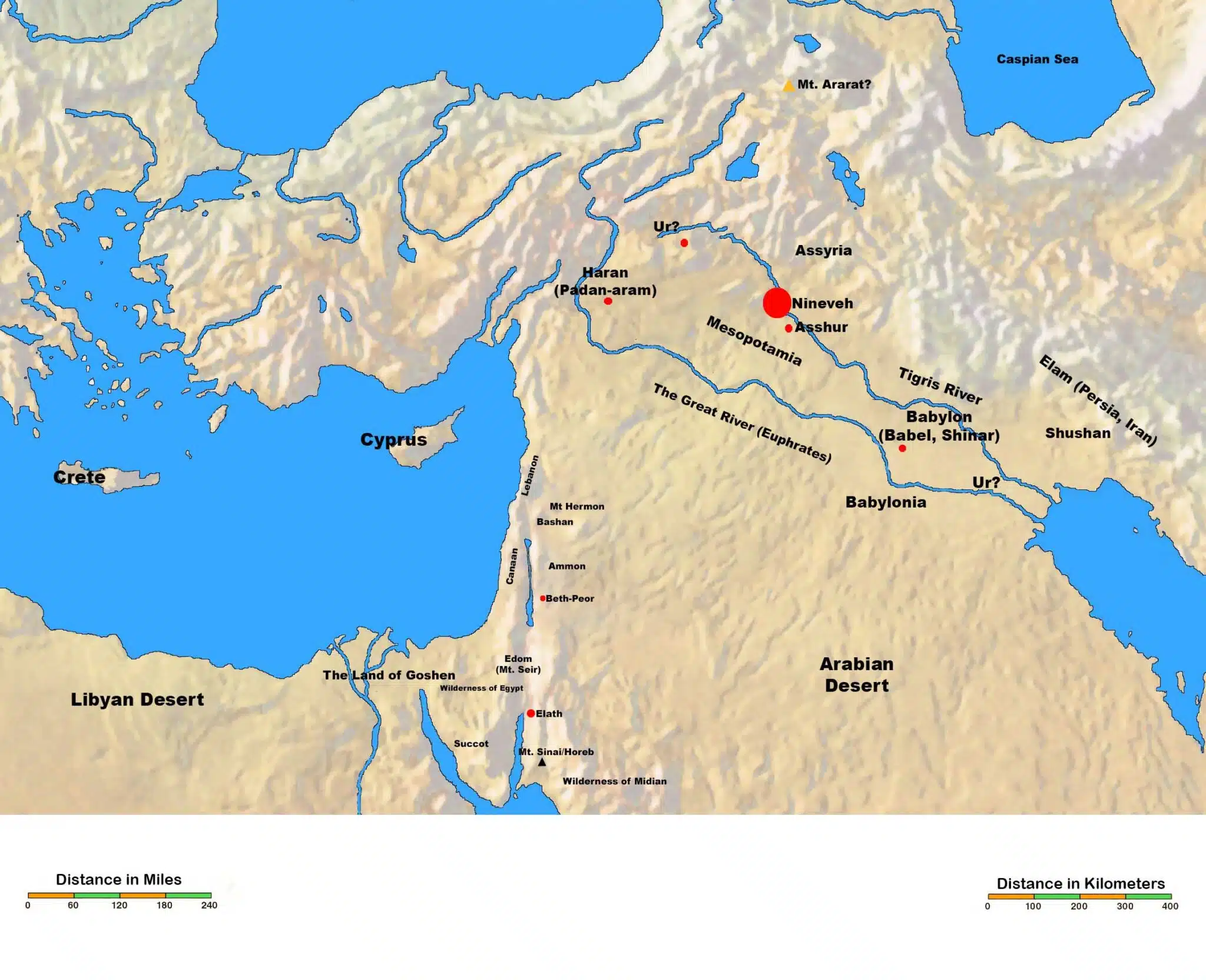The prophet Nahum receives a revelation from God concerning Nineveh.
The book begins with a title verse identifying the nature of the prophecy as an oracle. The term translated as oracle is “massa” in the Hebrew language. It is translated as “burden” when it denotes a load that an animal carries (Exodus 23:5; 2 Kings 5:17). On the other hand, it is translated as “pronouncement” or “oracle” when it denotes a revelation of some sort (Proverbs 31:1). In prophetic literature, the term oracle usually refers to a proclamation of disaster directed against foreign nations, as is the case here (Isaiah 13:1: 15:1).
The subject of the oracle is Nineveh. The city called Nineveh was the capital of the mighty empire of Assyria. It was on the eastern bank of the Tigris River. According to ancient Near Eastern standards, Nineveh was a fabulous city. Today Nineveh is Tell Kuyunjik, located on the Tigris River some six hundred miles upriver from the Persian Gulf in north Iraq.
The book of Nahum is the second Old Testament book written concerning Nineveh¾the first being the book of Jonah. About one hundred years earlier, God had called the prophet Jonah to proclaim a message of judgment to Nineveh. When the prophet warned the Ninevites of God’s judgment, they took the warning to heart and expressed their sorrow by declaring a city-wide fast (Jonah 3:5). And when God saw Nineveh’s genuine response, He relented from sending the announced judgment (Jonah 3:9). Nevertheless, some decades later, the Ninevites returned to their wicked ways, prompting God to give another oracle concerning that city.
The form of the oracle is that of a book. The form suggests that the prophet initially wrote down the divine message, most likely, on a scroll, as Jeremiah did (Jeremiah 36:2). Nahum probably preached the message later to encourage the people of Judah, whom the Assyrian empire had mistreated for so long. Nahum is the only prophetic work called “book” in the Old Testament.
The oracle that the prophet recorded as a book came to him through a vision. The term vision is “ḥāzôn” in Hebrew. It comes from a verb meaning “to see” or “to behold.” It is a technical term used for one form of divine revelation (Ezekiel 12:27; 13:16). It refers to visual representations of God’s will (Amos 7). As such, it tells us that the prophet saw and heard what God communicated to him.
Besides clarifying the nature of the prophecy, the title verse also identifies the author of the book as Nahum. But the reader may ask, who was Nahum? Where was his hometown? And when did he live? It is difficult to know who Nahum was because this is the only reference to him in the Old Testament. The text speaks of Nahum as the Elkoshite, meaning that he was from the town of Elkosh. But there is uncertainty as to the location of Elkosh. Some think it was a village located north of Nineveh. Others believe it was a city in Judah, about twenty miles southwest of Jerusalem. To this day, the location of Elkosh remains a matter of speculation.
The name Nahum means “comfort.” The same word occurs as a verb in the book of Isaiah (Isaiah 40:1). The prophet’s name seems to give us some clues as to the significance of his oracle, which was to provide comfort for Judah. The LORD had used the Ninevites to discipline His covenant people. However, the Ninevites did more than what they were supposed to do. Now the LORD raised the prophet Nahum to announce the destruction of Nineveh. Such an announcement of judgment offered hope and comfort for Judah, which the Assyrian empire had oppressed for so long (Nahum 1:15). The God of Israel and Judah is all-powerful. He takes vengeance on His adversaries and rescues His servants. He alone has the final word.
It is interesting to note that Jesus chose as His headquarters the town of Capernaum, which means “Nahum’s village” or “Village of Comfort.”
Biblical Text
1The oracle of Nineveh. The book of the vision of Nahum the Elkoshite.
Check out our other commentaries:
-
Ransom and Redemption: Jesus and Barabbas as Day of Atonement Symbols meaning
This article seeks to uncover the layers of symbolism between the Day of Atonement and Pilate’s offer to the Jewish priests of crucifying and releasing...... -
Amos 8:1-3 meaning
In his fourth vision, Amos sees a basket of summer fruit, the ripening of which suggests that its end has come. ...... -
Matthew 18:6-7 meaning
Having taught about greatness in the kingdom, Jesus now teaches about failure. He teaches that becoming a stumbling block to little ones is an immediate...... -
Matthew 11:10-15 meaning
Jesus continues His affirmation of John the Baptizer and his role as the forerunner to the Messiah. By extension Jesus is also testifying that He...... -
Daniel 9:1-2 meaning
Daniel reads the prophecies of Jeremiah concerning the 70 year punishment of the Jews.......



